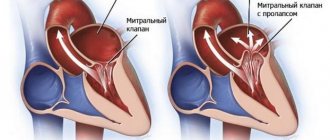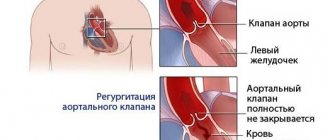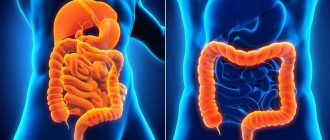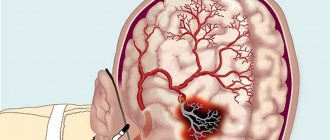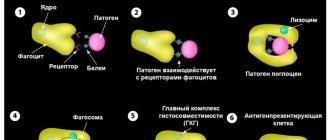Diagnosis of the disease
Signs of lactase deficiency can be confused with manifestations of other pathologies.
Therefore, the doctor carefully collects anamnesis, asks the patient about his condition, and prescribes special tests. Pathology can be diagnosed using the following methods:
- stool analysis for carbohydrates;
- extended coprogram;
- lactose curve;
- hydrogen breath test;
- complex lactose tolerance test;
- genetic tests;
- a diet excluding dairy and fermented milk products;
- urine lactose loading test;
- biopsy of the small intestine.
Some methods are indirect and, alone, separately from other diagnostic studies, cannot confirm or refute the presence of LN in a patient. Tests may not directly indicate the presence of pathology, but can reflect the reasons that trigger its development. For example, the test can detect a violation of the intestinal microflora, which leads to insufficient lactase production.
What is lactose?
Lactose is a carbohydrate. Lactose makes up more than 90 percent of all carbohydrates found in dairy products, which is why it is often called milk sugar. Accordingly, lactose is the main carbohydrate in human milk. It is also present in modern adapted milk formulas.
Why is lactose needed?
- The main source of energy in the baby's body.
- Important for the maturation and normal functioning of the central nervous system, nerves, vision, and joints.
- The substances formed as a result of its breakdown contribute to the formation of beneficial intestinal microflora, the synthesis of vitamins, and the absorption of calcium, magnesium, and manganese. A small amount of undigested lactose normally enters the large intestine, where it contributes to proper intestinal motility and protection from pathogenic and opportunistic microorganisms.
- I would also like to note that the lactose in human milk is different from the lactose in cow's milk. Human milk contains β-lactose, while cow's milk contains predominantly α-lactose. β-lactose, unlike α-lactose, helps the proliferation of beneficial bifidobacteria and the absorption of calcium, magnesium and zinc.
Treatment of lactase deficiency
Therapy is aimed at correcting nutrition. This is the main method. Drug treatment is symptomatic, that is, it only eliminates the symptoms to alleviate the condition, but does not remove the cause itself.
An elimination diet should be followed for both primary and secondary forms of the disease. It all depends on the age of the patient and the degree of manifestation of the disease.
Diet for older children and adults
- Experts are of the opinion that completely eliminating lactose-containing foods from the diet is fraught. Milk and fermented milk dishes contain many useful microelements, the deficiency of which in the body can lead to the development of certain diseases.
- Modern principles of diet therapy say: you need to monitor your health, compare symptoms when consuming dairy dishes and leave in the diet those that bring the least discomfort.
- Lactose-containing dishes should be combined with other foods. Moreover, everything should be at the same temperature, preferably medium. Symptoms of the disease appear more intensely if the patient takes dishes of contrasting temperatures: hot porridge with butter and a cold drink.
- The amount of food containing lactose is important. It has been noticed that consuming sour milk in small quantities does not cause significant symptoms. Therefore, the daily norm should be distributed throughout the day and monitor the amount of food.
- Products with live lactic acid bacteria are better absorbed than pasteurized ones.
- The higher the fat percentage, the less lactose the food contains. So, when preparing omelettes or porridges, milk can be replaced with heavy cream.
- Milk and fermented milk contain many vitamins and microelements. Therefore, by eliminating or reducing the consumption of such foods, the patient must compensate for the lack of nutrients. We are talking about vitamins A, B1, B2, B12, pyridoxine, nicotinic and folic acids, as well as calcium. Your doctor will help you choose an appropriate diet that will include all of the listed substances.
Diet for young children
- If there is sufficient weight gain and the baby’s condition is satisfactory, breastfeeding should be continued, taking into account a number of rules that the attending physician will tell you about. This includes the diet of a nursing mother and the special principles of day and night feeding.
- If weight gain is normal, but the child has loose stools, medications containing lactase should be used. The exact dosage is important here. Again, you should consult a specialist for advice. Self-medication can lead to complications.
- If the baby is not gaining weight well and has health problems, the doctor will advise replacing milk with low-lactose or lactose-free formulas and help you choose the right baby food.
Lactase deficiency is a fairly serious disease. Its symptoms should never be ignored, especially when it comes to infants. Self-medication can be fraught, but a timely visit to a doctor and strict adherence to his advice will help reduce or completely eliminate symptoms and significantly alleviate the condition.
How are complementary foods introduced to children with lactase deficiency?
- Complementary feeding is prescribed at the usual time (4.5-6 months), but for children with low weight and poorly resolving lactase deficiency, it may be preferable to prescribe complementary feeding a little earlier - from 4-4.5 months.
- For babies with a tendency to loose stools, it is advisable to prescribe the first complementary feeding with dairy-free porridge (rice, buckwheat), which, when artificially fed, can be diluted with a lactose-free mixture.
- If there is a tendency to constipation, the first complementary feeding is vegetable puree with coarse vegetable fiber (first zucchini, cauliflower, later pumpkin, etc.) with the addition of vegetable, preferably olive, oil.
- Meat puree is prescribed from 5.5-6 months.
- Fruit purees (without cream) can also be introduced from 5-6 months. They are introduced carefully, starting with the least sweet fruits, because... fructose causes gas formation.
- In the second half of life, it is possible to gradually introduce fermented milk products with a reduced lactose content - butter, cottage cheese washed from whey, three-day kefir (from 8 months).
Lactose and lactase: what happens to them in the human body?
If we ignore the true allergy to milk protein (most often cow's), then the vast majority of cases of poor milk tolerance are due to the so-called lactase deficiency. What kind of disease is this? Let's start from the very beginning.
In addition to fats and proteins, the milk of mammals (including humans) contains carbohydrates, primarily the milk sugar lactose. Lactose consists of two molecules of simple sugars - glucose and galactose, connected by a special bond. In order for lactose to be absorbed by humans, this bond must be broken. Only then can the resulting simple sugars glucose and galactose be easily absorbed in the small intestine.
The process of bond cleavage inside the lactose molecule is possible only in the presence of a special enzyme - lactase. The names are similar: the enzyme lactase breaks down the milk sugar lactose. This enzyme is located on the surface of the villi of the small intestine.
In humans and most mammals, the activity of the lactase enzyme is maximum after birth, this allows the absorption of large amounts of milk, which in the first months is the only source of food for the newborn. After stopping breastfeeding, lactase activity gradually fades as a person switches to an adult type of diet, where milk and dairy products are only a small part of the diet.
In some people, the decrease in the activity of this enzyme occurs very quickly, in others it is gradual, and a certain part of people maintain high lactase activity for a long time. What does this depend on?
It is known that the ability of lactase to break down the milk sugar lactose is regulated by a special gene. More precisely, two genes. One gene (LCT) encodes the enzyme lactase; without it, it simply could not be produced. The second gene located nearby is called MCM6, and its task is to regulate the activity of the LCT gene.
For example, it is known that the variant (genotype) of the MCM6 gene, designated C/C, is associated with low activity of the LCT gene, which leads to early lactose intolerance. With the T/T genotype, the activity of the LCT gene is high, even in adulthood. The C/T genotype is the most common variant and is most likely to develop lactose intolerance in middle age.
This information is very important because it is now possible to evaluate the MSM6 gene in laboratories.
So, the activity of the lactase enzyme is regulated by the gene; with age, the likelihood of a decrease in this activity increases. What happens to the milk sugar lactose if there is not enough enzyme to break it down in the small intestine? Some of the lactose will still be broken down and absorbed in the small intestine. The remaining undigested lactose molecules will move further through the small intestine and eventually reach the large intestine. During this process, due to high osmotic activity, lactose attracts water molecules, increasing the amount of fluid in the intestinal lumen, which increases the risk of developing diarrhea. Milk sugar that enters the colon is an excellent nutrient substrate for local bacteria, which actively begin to break it down, producing gases. Increased gas formation and bloating are common symptoms in such patients. In addition, people with impaired breakdown and absorption of lactose may experience mild abdominal pain, nausea and other unpleasant symptoms.
To summarize the above: low activity of the lactase enzyme leads to impaired absorption of lactose in the small intestine. lactase deficiency in medicine . Lactase deficiency, which occurs over time in adults, also has a second name - adult hypolactasia. This article will focus on this most common type of lactase deficiency. We will leave aside congenital lactase deficiency (an extremely rare disease of newborns) and secondary lactase deficiency (occurs as a consequence of a number of gastroenterological, infectious and other diseases).
How to replace products with lactose?
Lactose is found in all dairy products, plus some confectionery products, instant foods, meat, tablets, and dietary supplements. Pay attention to the ingredients.
For people intolerant, lactose-free or plant-based milk is suitable. Or fermented milk products, in which lactose has already been broken down by lactic acid bacteria, so kefir, yogurt, fermented baked milk, as well as butter and cheese do not give an uncomfortable effect.
Lactase enzyme is sold in tablets or capsules. You can drink it before drinking milk. This method should not be used without consulting a doctor.
Products for people with lactose intolerance
People suffering from this disease need to be careful about what is on the table. Milk sugar is not just milk. It is also found in other foods that are recommended to be excluded from the diet. These include:
- packaged sausages;
- sauces (ketchup, mustard, mayonnaise);
- bakery products;
- packaged soups;
- ice cream;
- nut butter;
- pies, cakes, pastries;
- hamburgers and cheeseburgers;
- condensed milk;
- bulk spices;
- chocolate, lollipops;
- saccharin tablets.
People with lactase deficiency can use:
- soy drinks (including soy milk);
- chicken eggs;
- lard;
- vegetable oil;
- vegetables and fruits;
- grains and legumes;
- nuts;
- honey;
- pasta;
- rye bread without food additives and whey.
Prevention of lactase deficiency
To prevent this disease, it is necessary to prevent the symptoms of hypolactasia. This is done using a diet with a complete absence of lactose or low content. Therefore, if a patient experiences digestive disorders after eating unfermented dairy products, it is necessary to conduct a genetic test for lactase activity: it will allow you to choose a suitable diet and avoid attempts at pointless treatment. Using this test, you can also predict lactose intolerance in children in order to avoid unexpected intestinal disorders.
Types of lactose intolerance
There are several types of disease:
- Congenital. It is of genetic origin and is very rare: there is one case per thousand newborns. This type of intolerance is very easy to diagnose, as it has pronounced manifestations. Doctors make the diagnosis in the maternity hospital.
- Transient (temporary, passing). Infants are also susceptible to this disease, and it is the most common. A newborn, who still has little lactose enzyme and underdeveloped microflora in the gastrointestinal tract, is bothered by frequent colic, loose stools, mucous and green discharge. Over time, the digestive system completes its formation, the microflora returns to normal, there is enough lactose - the signs of the disease disappear. As a rule, this happens a month after birth; for some babies this period extends to 6-7 months.
- Secondary. Such lactase deficiency often occurs as a result of an intestinal infection, and it can appear in both children and adults. After an illness, a person does not tolerate milk well for some time, but if you adhere to a diet and proper nutrition, the treatment will be more effective, and soon the consumption of dairy products will not cause any discomfort or undesirable consequences.
- Lactase deficiency in adults. Sometimes some malfunctions occur in the body of an adult, as a result of which the amount of the lactase enzyme is reduced. This can be due to various reasons, for example, illness or age, due to which the gastrointestinal tract ceases to “perceive” milk, although there were no problems with this before.
